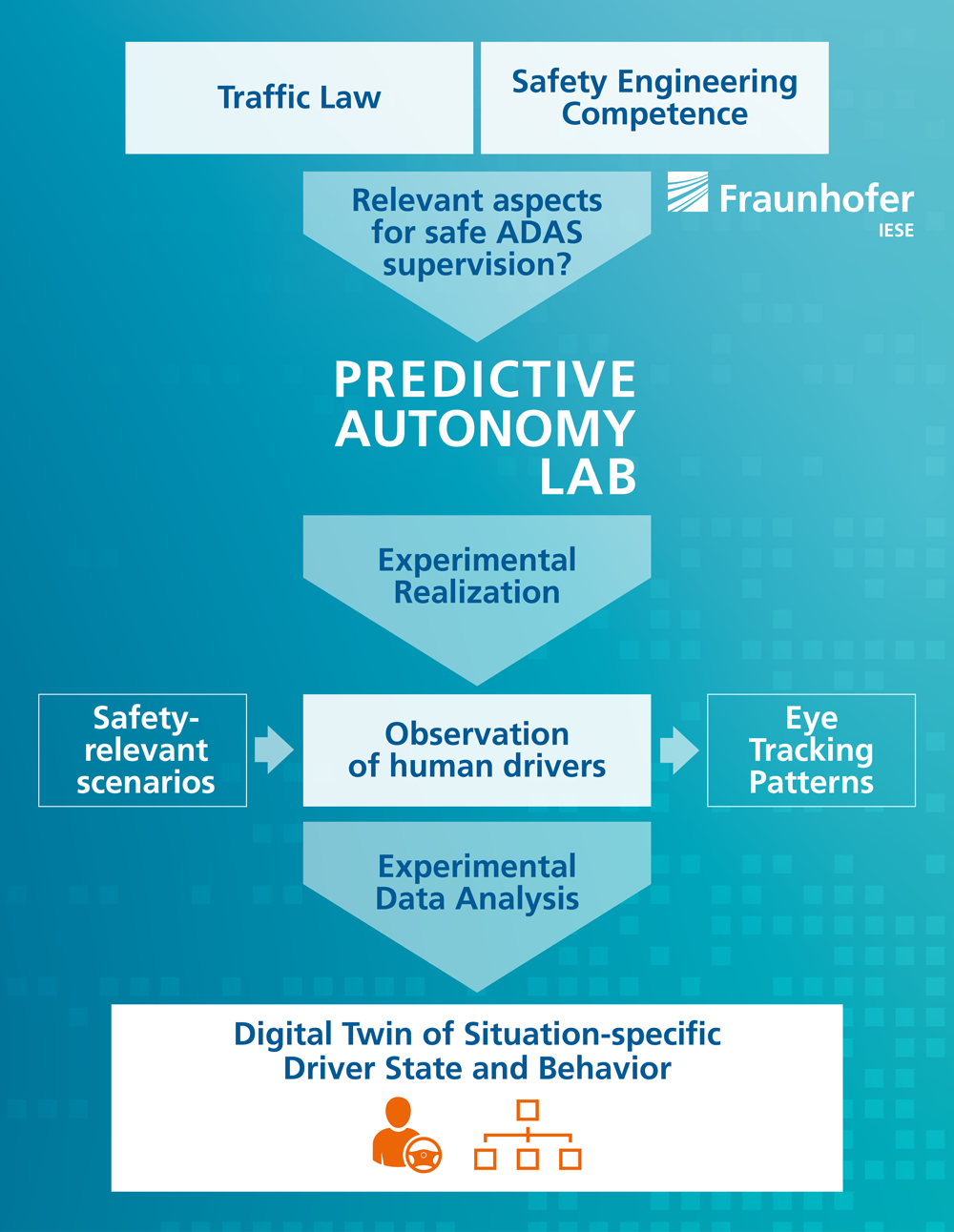The Predictive Autonomy Lab (PAL) provides a simulation environment to explore how humans interact with automated driving systems – focusing on the relation to safety risks identified through systematic safety engineering.
Predictive Autonomy Lab
Empirical driver research experiments driven by safety engineering
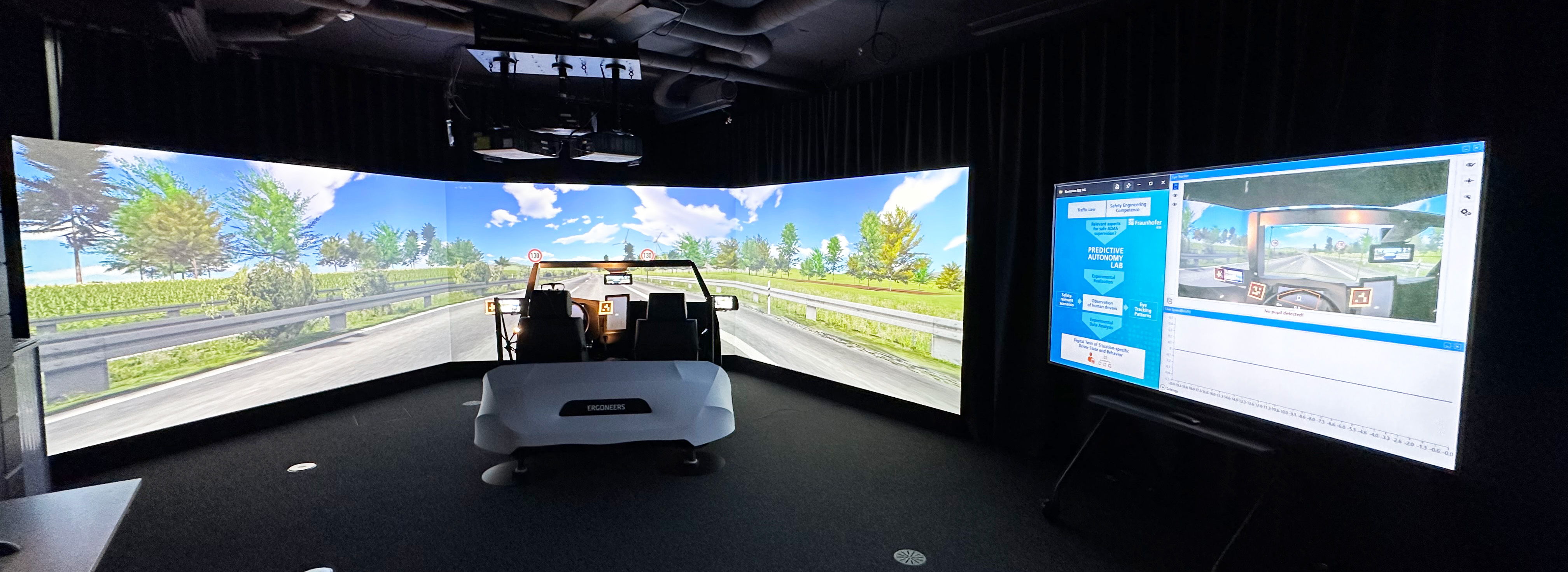
Empirical research infrastructure for safety and driving behavior research
In our driving simulator laboratory, we conduct empirical research on driver behavior from a safety perspective. Using safety engineering methods, we investigate safety‑critical driving situations to build and apply actionable safety knowledge. The simulator enables more accurate modeling of driver behavior by accounting for the external environment and interactions with other road users. These causal insights into human decision‑making improve the performance of driving automation systems. We also design and evaluate warning and intervention strategies that explicitly consider environmental influences on risk and safety, making them more timely, precise, and effective.
At the Predictive Autonomy Lab, Fraunhofer IESE offers safety-motivated research that ensures compliance with current standards and enables cost-efficient safety argumentation through validated driver behavior models.
Research services/investigations for the automotive industry
- Explicit link to safety engineering and systematic risk management to augment empirical research
- Investigation of human decision-making in safety-critical situations derived from safety engineering processes in form of digital twins of situation-specific driver state and behavior
- Enhanced performance for driver monitoring systems in DCAS through a deeper understanding of human drivers in human-machine interaction and a risk-sensitive warning and intervention strategy (more details in Section DCAS)
- ADS Systems becoming more intelligent and efficient to get a human-like understanding of human driver behavior in mixed traffic scenarios
- Reducing unnecessary nuisance alarms and safety interventions through tailored safety models
- More cost-efficient validation of safety concepts (e.g., driver takeover or driver monitoring)
- Validation of human factors in safety-critical driving situations through human-in-the-loop simulation
Overview of the Predictive Autonomy Lab
- Modern simulator laboratory with equipment for empirical research in scope of the automotive domain
- High immersion driving simulator due to dynamic motion system and extensive audio-visual system
- Behavioral research and test subject observation with various sensor technologies such as eye trackers and physiological vital signs sensors
- Immersive pedestrian simulation with VR-glasses and VR-platform
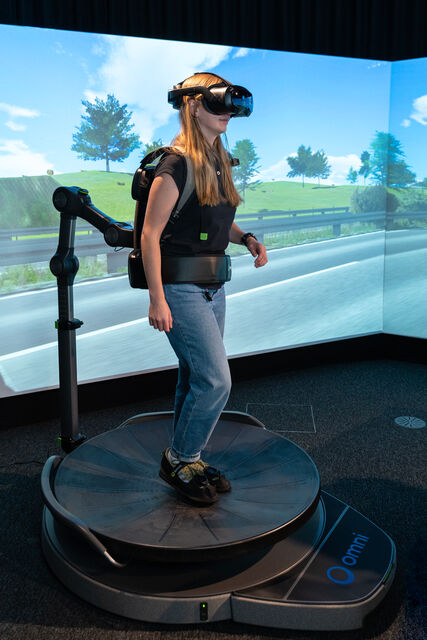
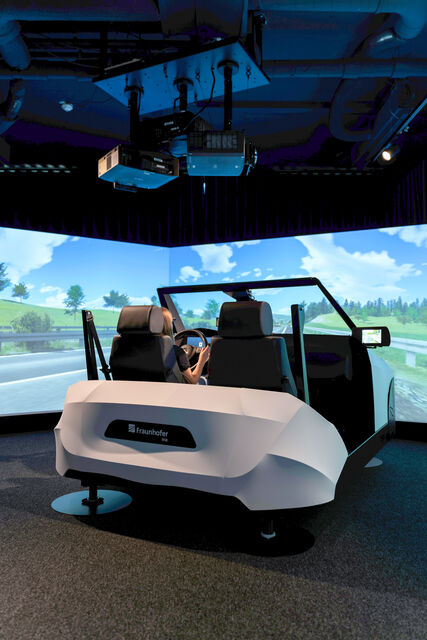
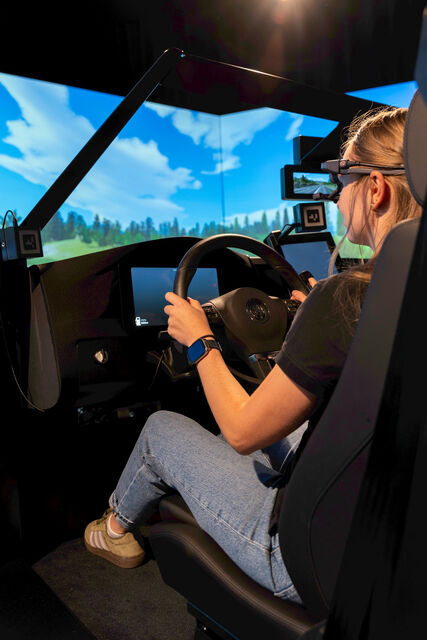
Situation-sensitive and risk-aware driver monitoring for safe DCAS
There is a lack of accurate and safe driver monitoring systems that meet the driver’s expectations. Drivers who monitor DCAS are prone to distractions. However, today's DMSs remain limited: they assume worst-case driving situations, rely solely on data from inside the vehicle, and use simplified warning and intervention logic. This leads to frequent false alarms that frustrate and confuse drivers and undermine market acceptance, while rapidly evolving safety regulations make continuous compliance increasingly difficult.
Our situation-sensitive and risk-aware driver monitoring approach can increase customer acceptance and satisfaction. It helps you to design better DMS solutions embedded into the safety engineering processes while benefiting from the relation between identified safety risks and the behavior of the driver in its supervision task.
Our concrete value propositions
- More accurate and realistic assessment of the driver’s engagement in its supervision task while using DCAS
- Considering the current driving risk and the external driving situation
- Analyzing the shortcomings of the DCAS as additional input
- More detailed evaluation of the driver’s supervision
- Sophisticated warning and intervention strategies for higher user acceptance and higher system availability
- Intelligent warning and intervention strategies supporting the driver instead of hindering him
- DCAS system adaptations as additional strategy
- Part of the established systematic safety engineering and dynamic risk management processes

Method for designing situation-sensitive and risk-aware DMS
- Driven by safety goals and embedded into the safety concept
- Based on state-of-the-art dynamic risk management concepts
- Tailored approach considering the operational design domain and the system context
- Collaboration between domain experts, safety engineers, and psychologists
- Empirical driver behavior research with Fraunhofer IESE’s Predictive Autonomy Lab
- High immersion driving simulator with dynamic motion system and extensive audio-visual system
- Various sensor technologies such as eye trackers and physiological vital signs sensors
